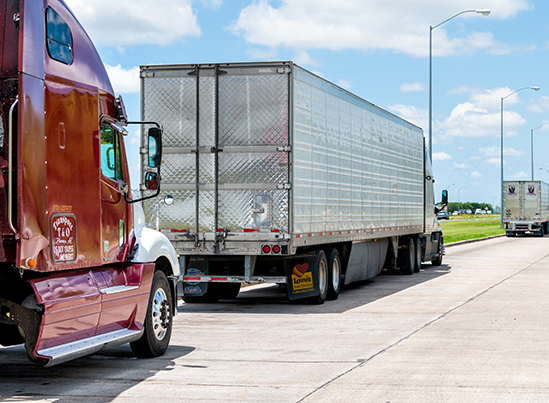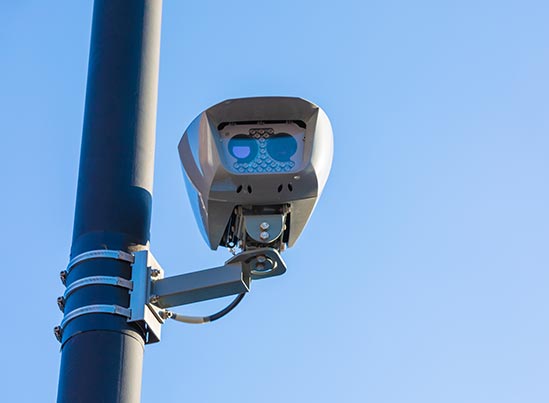Expanded ITD
States that achieve ITD Core Compliance are eligible to apply for grant funding to participate in Expanded ITD, taking advantage of the latest technological advancements to improve safety in their State.

What is Expanded ITD?
Unlike Core ITD, which requires States to deploy the three core elements of ITD, Expanded ITD allows States to choose which technology they adopt, customizing their ITD program to meet their State’s needs.

What kind of projects are included in Expanded ITD?
Below are a few examples of Expanded ITD projects.
Work Zone Detection
A technology that will collect work-zone time and location data and send advanced notification of mobile work zone presence, congestion, incident, and roadway modifications ahead to CMV drivers within the cab, through the CMVs’ transponders, electronic on-board systems, cell phones, and/or motor carrier routing and dispatching systems. This will allow CMV drivers to be prepared to take extra precaution when navigating through these areas.
Commercial Motor Vehicle Parking
A technology that will proactively collect and share CMV parking space availability with CMV drivers using dynamic message signs, interactive voice recognition, smartphone app, or other proven technology.

Virtual Weigh Stations
A roadside enforcement facility that is monitored from another location, and therefore does not require continuous staffing. These may use a variety of sensor components to collect data, such as weigh-in-motion (WIM) installation, a camera system, and wireless communications.
License Plate Readers
License Plate Recognition (LPR) is an image-processing technology used to identify vehicles by their license plates. Some States have implemented this to augment e-screening capabilities.
Oversize/Overweight E-Permitting
While International Registration Plan (IRP) and International Fuel Tax Agreement (IFTA) e-credentialing are requirements of Core ITD, industry and State personnel are interested in electronic support for permitting. Oversize and overweight (OS/OW) loads are special case shipments that exceed the operational parameters defined by the State. The correct routing of these shipments makes sure that mobility, safety, and security concerns are addressed. A number of States are actively involved in projects involving OS/OW electronic permitting and route planning, and some are incorporating bridge analysis into their OS/OW systems.

One-Stop Shops and Electronic Portals
A web portal or one-stop shop can provide a way for a State to give a consistent look and feel across multiple applications for back-office users, enforcement, and motor carriers. A State may provide an electronic one-stop shop through which motor carriers can access the State's IRP, IFTA, and OS/OW permitting systems. Such a portal may provide single-sign-on access to all users, which would allow a user to log in to the portal using a username and password and then be directed to specific credentialing applications without logging in again.
Driver Information Sharing
Given that high-risk drivers are involved in a disproportionate number of crashes, the driver information sharing area of Expanded ITD is likely to have a large impact on safety. A State's Commercial Vehicle Information Exchange Window (CVIEW) could be enhanced to include driver information, which would improve an enforcement officer's ability to check driver credentials for safety problems. Card-swiping devices and biometrics may be included in the system for linking the driver in the vehicle to his or her commercial driver’s license (CDL).
How do States demonstrate Expanded ITD?
For Expanded ITD, States are not required to demonstrate and deploy a set of fixed capabilities or to enable certain technologies as part of Expanded ITD, but rather are able to choose the capabilities that they wish to deploy. This “cafeteria approach” allows States to customize their Expanded ITD programs and focus their technology resources on the projects that are most important to their needs.
Program Planning
Similar to Core ITD, Expanded ITD requires a PP/TLD for funding for deployment projects.






